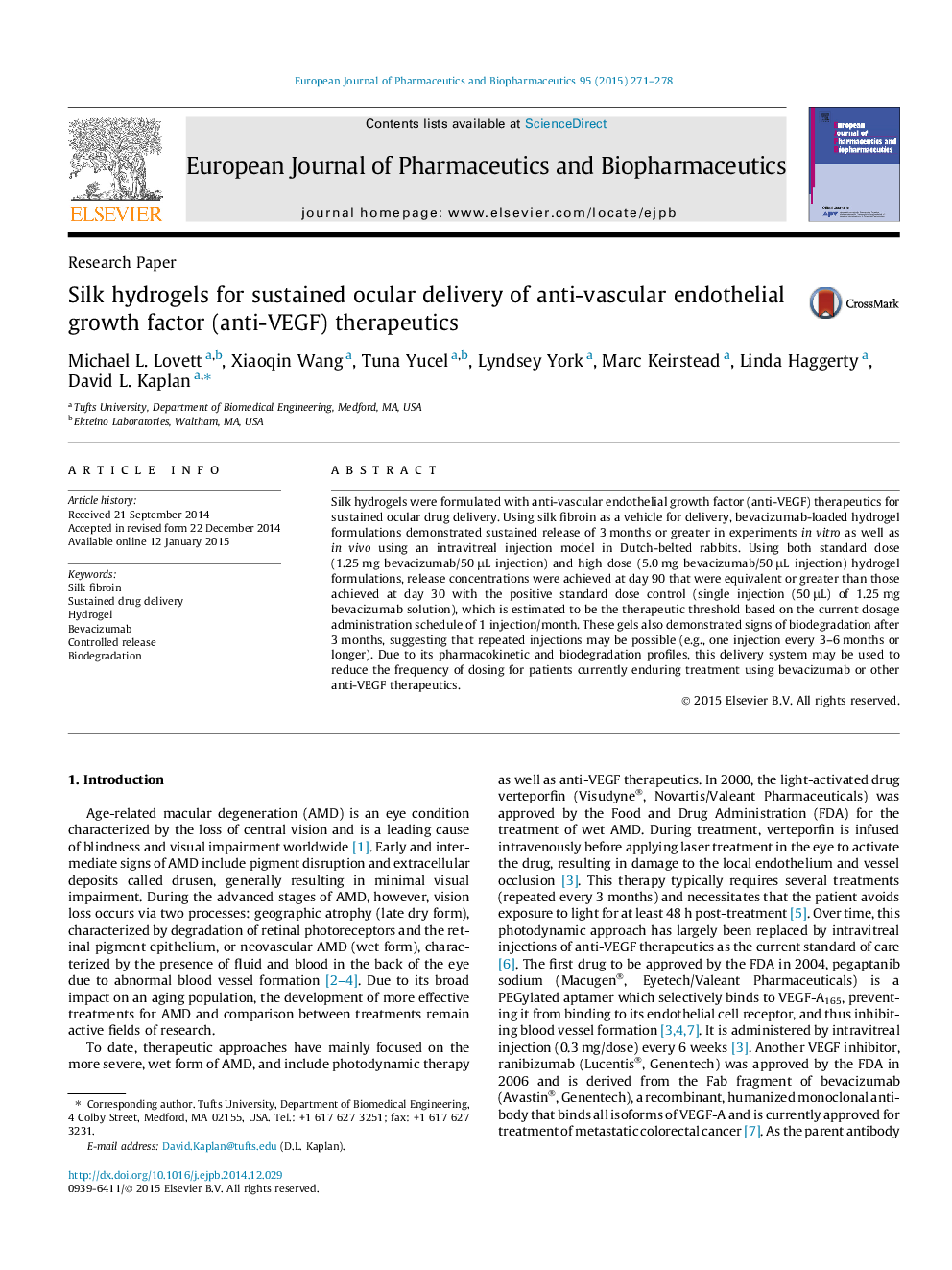| Article ID | Journal | Published Year | Pages | File Type |
|---|---|---|---|---|
| 2083289 | European Journal of Pharmaceutics and Biopharmaceutics | 2015 | 8 Pages |
•Silk hydrogels were formulated with bevacizumab for sustained ocular drug delivery.•Sustained release of ⩾3 months was achieved using silk gels in a rabbit model.•Timespans of hydrogel release were at least 3-fold greater than aqueous controls.•Silk gels were well-tolerated in rabbits and maintained bioactivity of bevacizumab.•Evidence of gel biodegradation offers potential for repeat injections over time.
Silk hydrogels were formulated with anti-vascular endothelial growth factor (anti-VEGF) therapeutics for sustained ocular drug delivery. Using silk fibroin as a vehicle for delivery, bevacizumab-loaded hydrogel formulations demonstrated sustained release of 3 months or greater in experiments in vitro as well as in vivo using an intravitreal injection model in Dutch-belted rabbits. Using both standard dose (1.25 mg bevacizumab/50 μL injection) and high dose (5.0 mg bevacizumab/50 μL injection) hydrogel formulations, release concentrations were achieved at day 90 that were equivalent or greater than those achieved at day 30 with the positive standard dose control (single injection (50 μL) of 1.25 mg bevacizumab solution), which is estimated to be the therapeutic threshold based on the current dosage administration schedule of 1 injection/month. These gels also demonstrated signs of biodegradation after 3 months, suggesting that repeated injections may be possible (e.g., one injection every 3–6 months or longer). Due to its pharmacokinetic and biodegradation profiles, this delivery system may be used to reduce the frequency of dosing for patients currently enduring treatment using bevacizumab or other anti-VEGF therapeutics.
Graphical abstractFigure optionsDownload full-size imageDownload high-quality image ( K)Download as PowerPoint slide
